SamplingSampling refers to the process of selecting units or portions of a larger group that will be studied in order to answer questions about the larger group. The units can be people, water samples, ice cores, or any other appropriate object. Participants will explore the meaning of sampling and how it impacts experimental design and explore factors that define and limit sampling in the variety of projects visited during the expedition. They will consider how results from the chosen samples are used to describe the bigger target of a project's study. Controls
Today we went to Cape Bird to collect sediment samples. Unlike the samples we are collecting around McMurdo station, the Cape Bird samples are our control samples. In scientific experiments, control samples are treated just like regular samples but they are not manipulated. In our research, our control samples are places where we do not expect to see evidence of human disturbance. They allow us to compare the sediment in a disturbed environment, like McMurdo, with sediment in a place that is undisturbed. If we see similar chemicals in the soils, we can assume that they are not caused by human disturbances. However, if we see chemicals or contamination at McMurdo Station that we do not see in our control samples, we can assume that the contamination is due to human disturbances. We have more than one control site in our research, but Cape Bird is an exciting one!
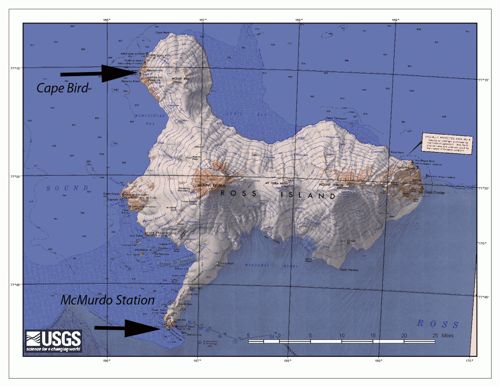
Helicopter Ride
We took a helicopter to get to Cape Bird. It was amazing to have a bird's eye view of Ross Island. We reviewed safety protocols for riding in a helicopter and then piled in. I was lucky enough to get a window seat! The helicopter dropped us, our ECW(abbreviation) Extreme Cold Weather clothing gear, and some survival bags off and headed back to McMurdo Station.

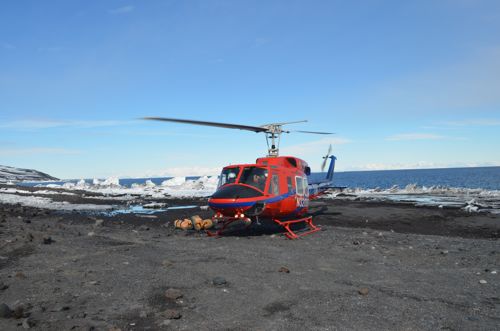
Collecting samples
Once we landed, Joni strapped on the GPSA Global Positioning System (GPS) is a satellite-based navigation system used to track the location or position of objects on the Earth’s surface. unit and found our control sample sites. At each site, Terry measured the depth of the soil and took a photo of the area, Andrew collected a soil sample, and I ran back and forth putting away the full jars and getting new ones out. Since we have been collecting sediment samples for some time now, we have become very efficient and were finished with our work in less than an hour. That left us three more hours to eat lunch and explore the area.
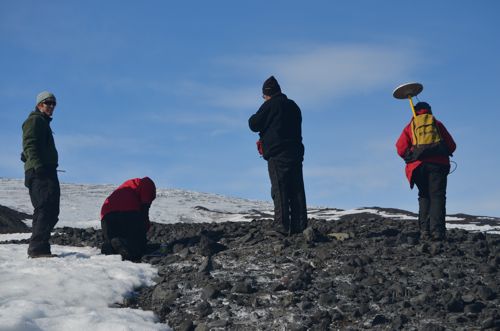
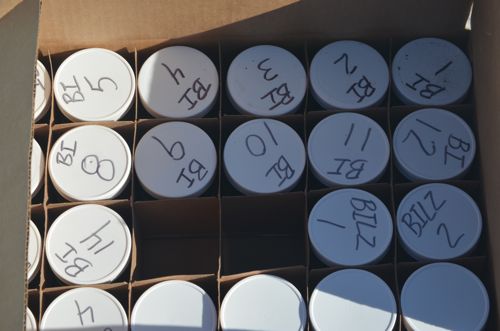
Penguins!
Cape Bird is unique because of its Adelie penguin rookery.. As we wandered around the area, I could see colonies of penguins off in the distance. Penguins were everywhere! I have to say, as beautiful as they are, they sure do smell! I hunkered down in a spot and watched penguins travel back and forth right by me heading to and from the shore. Some penguins sat on their eggs, while others went into the nearby sea. There were also Skuas there who were also protecting their nests. I didn't notice one near by me as I was walking, and was startled at the warning signal she gave!
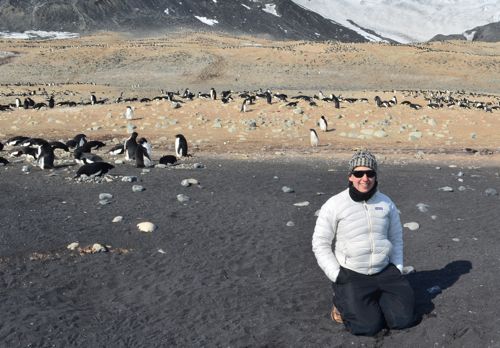
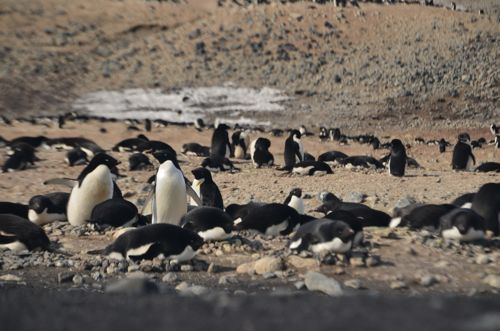
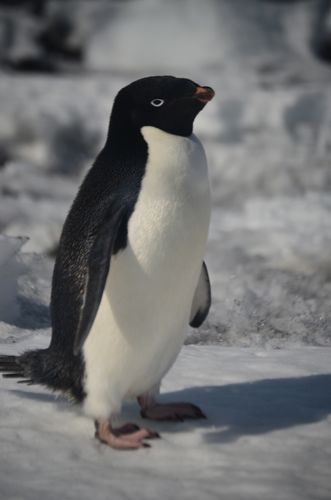
I will be sure to write more about the Adelie penguins! They are loveable and fascinating creatures!
Heading home
The helicopter arrived an hour early due to bad weather. I was sad to leave the penguin rookery, but felt grateful we had a chance to see it. We hopped back into the helicopter and took the short trip back to McMurdo station. After we landed, our research team took samples from two more sites. Tonight I have an opportunity to go on a pressure ridge tour near Scott Base (the nearby New Zealand station)!
Questions
Why is it important to collect a control sample? What would happen if we didnt' collect control samples?
What are some safety precautions you would take if you were going to Cape Bird?
Math Connection
If Cape Bird is approximately 35 miles from McMurdo Station and it took about 20 minutes to fly there, how many miles per minute did we travel on average? How many miles per hour?
Cool Careers in Antarctica
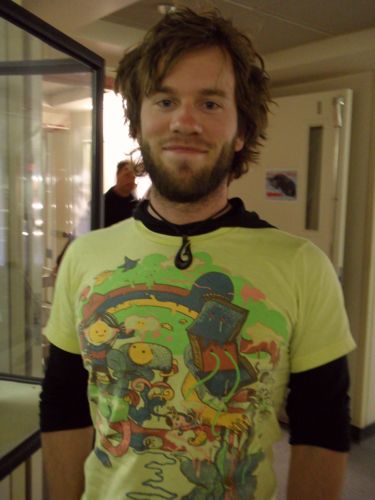
Meet Dan Kluskiewicz. Dan is a graduate student in Seattle, Washington, studying ice mechanics. He is working on a project involving the physical structure of ice on the West Antarctic Ice Sheet. His team wants to better understand ice crystals and how ice flows. This is connected to the larger issue of ice melting in Antarctica. For example, the Pine Island GlacierA mass of ice that persists for many years and notably deforms and flows under the influence of gravity. (PIG) is melting faster than anyone predicted and they do not understand why it is melting so quickly. The work that Dan and his team do will give scientists a better understanding of how ice is melting here. As a child, Dan always liked math as well as going outside. For fun, Dan likes to play ping pong, go kayaking, backpacking, skiing and fishing. Dan's advice for students regarding math and science is that if you want to be a scientist, you should learn math. He says: "Math gets to be a lot cooler once you apply it to science."

Comments